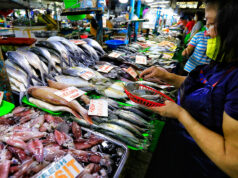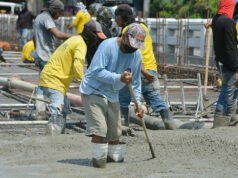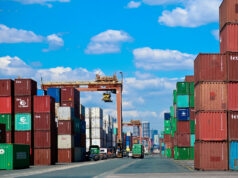S&P: Loan growth to slow in 2019
LOAN GROWTH will likely ease in 2019 as higher interest rates bite, S&P Global Ratings said, even as it noted that heavy funding needs for the aggressive infrastructure spending program will boost lending.
Nikita Anand, credit analyst at S&P, said credit growth will likely slow next year as successive rate hikes introduced by the Bangko Sentral ng Pilipinas (BSP) are increasingly reflected in market rates, which in turn could dampen overall economic activity. “We expect corporate and household loan demand of around 14%-15% in 2019, tempered slightly by a 175-basis-point (bp) increase in policy rates in 2018 to date,” the debt watcher said in its Asia-Pacific Banking Outlook 2019 report published last week.
The BSP has fired off five consecutive rate hikes since May in response to surging inflation.
Many economists now expect policy makers to hold fire and keep benchmark interest rates steady as overall price increases appear to be easing of late.
From an 18.32% increase in bank lending in 2017, S&P projects growth to decelerate to 15% this year and in 2019 as higher borrowing costs weigh on loan demand.
Bank lending posted an 18.1% year-on-year increase in October, according to latest BSP data.
BUOYED BY ‘BUILD, BUILD, BUILD’
Despite this, the credit rater expects a big boost from the public sector.
“However, the current administration’s ‘Build, Build, Build’ scheme may provide further boost to infrastructure spending in the country and aid credit growth via the multiplier effect until the end of the president’s term in 2022,” Ms. Anand said.
The state’s planned rollout of 75 big-ticket projects will be funded by a mix of public funding, as well as local and external borrowings.
Prior to this, S&P had said that higher interest rates are unlikely to unduly weigh on the financial system, given the fact that both household and corporate debt remain “modest” and that borrowing costs are rising from a low base.
Economic conditions are also seen “favorable” for further expansion.
“We expect robust economic growth to remain supportive of the domestic credit environment,” S&P said in its report.
“However, persistent increases in interest rates may begin to affect credit growth as well as the debt repayment capacity of borrowers, particularly those belonging to smaller, low-income groups.”
Higher interest rates are not expected to erode asset quality, with S&P seeing that soured loans will take a low, steady share of 3.5% of total debts.
At the same time, the credit rater flagged that currency volatility as well as fast inflation will be the biggest risks to the banking system, even as these should be “manageable” as lenders have more than enough capital buffers to withstand such shocks.
“While the banking industry’s foreign currency exposure is low (direct lending as well as external debt of corporates), a sustained depreciation in the peso could contribute to increasing inflation and consequently temper real economic growth,” the debt watcher said.
The peso has lately pared losses as it recovered to P52 versus the dollar, down from 12-year lows the previous months.
S&P has downgraded its Philippine growth forecast to 6.5% this year from 6.7%, matching the low end of the government’s revised 6.5-6.9% estimate. The Philippines holds a “BBB” rating — a notch above minimum investment grade — with a “positive” outlook from S&P since April. — Melissa Luz T. Lopez



